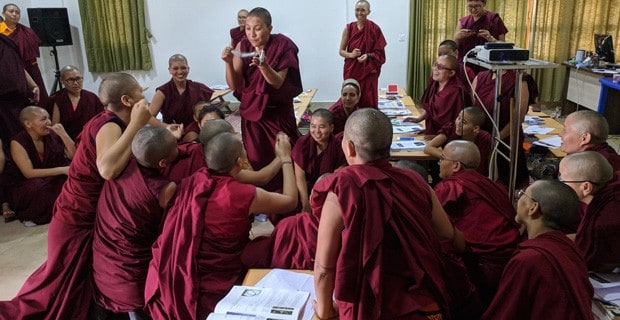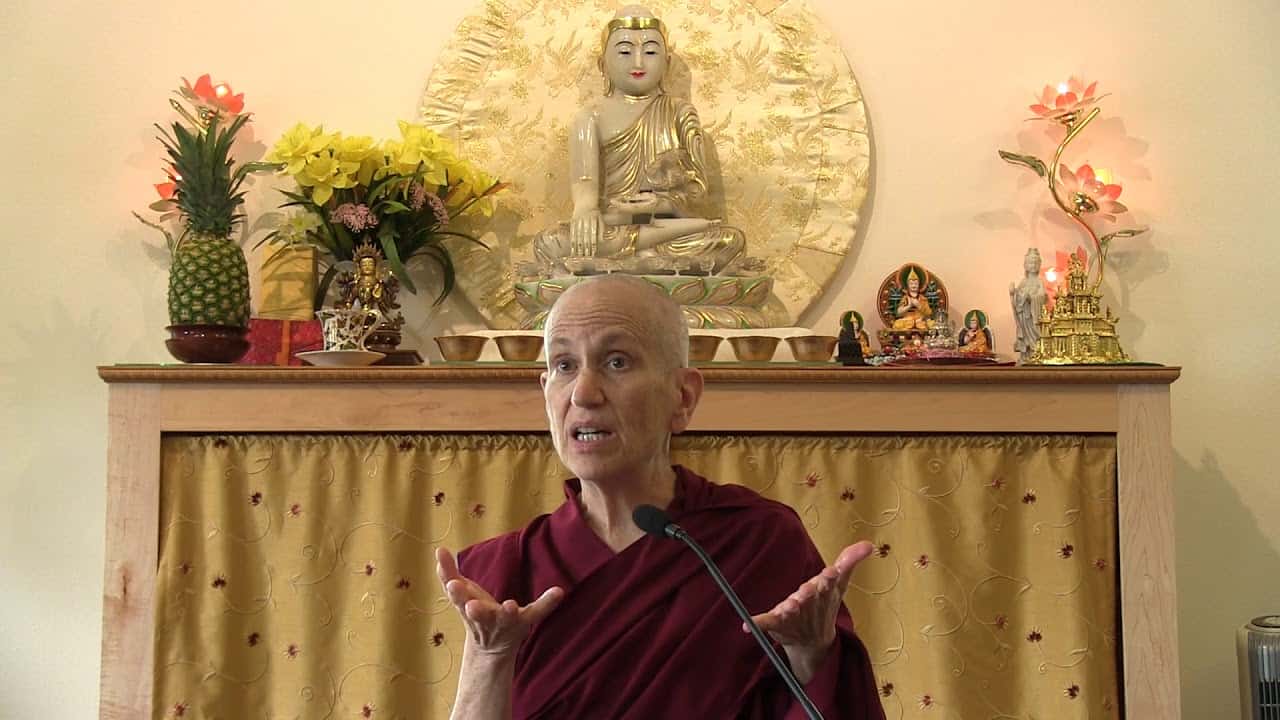The object of negation
The text turns to training the mind on the stages of the path of advanced level practitioners. Part of a series of teachings on the Gomchen Lamrim by Gomchen Ngawang Drakpa. Visit Gomchen Lamrim Study Guide for a full list of contemplation points for the series.
- Why identifying the object of negation is the most important
- Looking for how the self appears in daily life
- How do things actually exist?
- Common mistakes when performing the four point analysis
- Understanding the pervasion and the last two points
142 Gomchen Lamrim: The Object of Negation (download)
Contemplation points
- In the four point analysis, the first point is ascertaining the object of negation. Consider:
- What is a negation? Recall some of the examples from the teaching and then come up with some of your own. In this analysis, what is it that we’re negating?
- Why is it that if we don’t correctly identify the object of negation, the rest of the analysis can’t follow?
- What is the result of negating too much or too little?
- Venerable Tarpa said that whatever appears to us is mixed together with the object of negation, that we can’t separate them because the ignorance from our own minds pollutes our perception. Then, on the basis of that mistaken perception, we cling to these distorted appearances, relating to them as existing inherently. Spend some time thinking through this process. What problems has viewing the world in this way caused for you in your life?
- At the same time, it’s important to understand that things do exist, but they only exist as a combination of the basis of designation and the mind that imputes it as a designated object. Spend some time thinking about this. Does it seem strange to think about the world and yourself in this way? How might this change the way you relate to others and your experience in the world?
- The second point in the four point analysis is ascertaining the pervasion. In other words, we have to reach a conclusion about where this object of negation is.
- If the self exists, it has to be identical to the aggregates or separate and unrelated to them. Why is there no third possibility?
- Why with inherent existence do we only have these two choices?
- The third point in the four point analysis is to ascertain freedom from being one, determining if the object of negation is identical to the object.
- Consider some of the contradictions that arise if the self was one with (identical to) the aggregates: since there are five aggregates, there would be five selves; all the individual parts of the body and mind, since they are not the same, would be individual selves; with some parts of our mind wholesome and some not, some selves would need to be extinguished and others nurtured. Spend some time thinking of other natural contradictions.
- Why is it so important to do this analysis, mentally dissecting the body and mind, determining that the self isn’t there in the aggregates?
- The fourth point in the four point analysis is to ascertain freedom from being many, determining if the object of negation is completely unrelated to the object.
- When searching for glasses in a two room cabin, once you realize they aren’t there, you are left with the “absence” of the glasses. Similarly, when we search for, and cannot find, the inherently existing self either in or apart from the aggregates, we are left with the absence of inherent existence of the self.
- Why can we only come to this conclusion through mediation and not simply from listening to teachings?
- What is the importance of serenity in our meditation on emptiness?
- How might you relate to the world differently with the realization of emptiness? What benefits come with this realization?
Venerable Thubten Tarpa
Venerable Thubten Tarpa is an American practicing in the Tibetan tradition since 2000 when she took formal refuge. She has lived at Sravasti Abbey under the guidance of Venerable Thubten Chodron since May of 2005. She was the first person to ordain at Sravasti Abbey, taking her sramanerika and sikasamana ordinations with Venerable Chodron as her preceptor in 2006. See pictures of her ordination. Her other main teachers are H.H. Jigdal Dagchen Sakya and H.E. Dagmo Kusho. She has had the good fortune to receive teachings from some of Venerable Chodron's teachers as well. Before moving to Sravasti Abbey, Venerable Tarpa (then Jan Howell) worked as a Physical Therapist/Athletic Trainer for 30 years in colleges, hospital clinics, and private practice settings. In this career she had the opportunity to help patients and teach students and colleagues, which was very rewarding. She has B.S. degrees from Michigan State and University of Washington and an M.S. degree from the University of Oregon. She coordinates the Abbey's building projects. On December 20, 2008 Ven. Tarpa traveled to Hsi Lai Temple in Hacienda Heights California receiving bhikhshuni ordination. The temple is affiliated with Taiwan's Fo Guang Shan Buddhist order.


